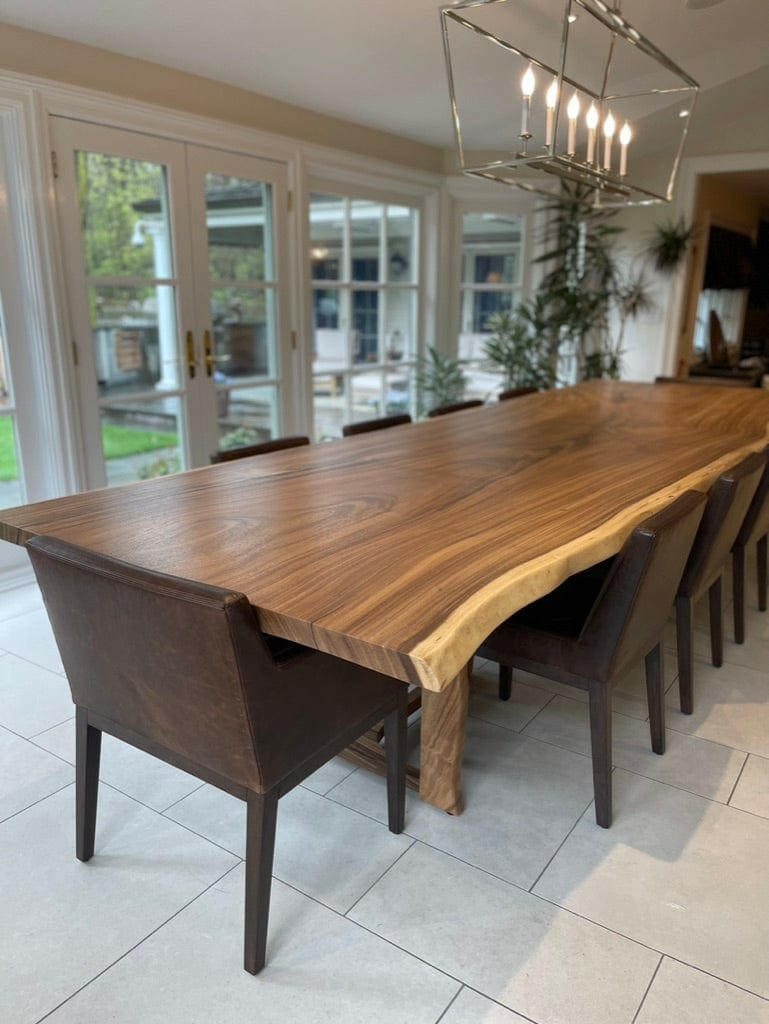Top Trends in Dining Room Table Legs to Elevate Your Dining Space
Top Trends in Dining Room Table Legs to Elevate Your Dining Space
Blog Article
An In-depth Look at Dining Table Leg Styles: Locating the Suitable Match
Choosing the right eating table leg design is vital for both aesthetic charm and practical performance. For those with larger tables, trestle legs make sure sturdy support, whereas barrette legs introduce a mid-century contemporary ambiance with their minimalist style. The x-shaped legs mix contemporary style with boosted stability.
Conventional Four Legs
Amongst the numerous types of table leg styles, the standard four-leg layout continues to be a timeless choice for numerous families. This timeless arrangement offers a harmonious blend of functionality and appearances, making it a perennial favorite. Four legs provide balanced support, guaranteeing the table stays steady and capable of bearing considerable weight. This is especially helpful for families that often hold big events or utilize their dining table for several functions, such as work or crafting.
From an aesthetic perspective, the traditional four-leg layout can be quickly adjusted to different interior styles. Whether crafted from wood, steel, or a mix of materials, these legs can be intricately sculpted, smooth and minimalistic, or anything in between. Their flexibility allows them to enhance both rustic and modern settings seamlessly.
In addition, the uncomplicated structure of the four-leg design facilitates convenience of motion and positioning within a space. Unlike more facility bases, this style minimizes blockages, offering enough legroom for restaurants. In summary, the typical four-leg table leg design marries sustaining sophistication with useful capability, making it an astute selection for those seeking both kind and function in their eating furniture.
Stand Base
Typically commemorated for its classy and space-efficient design, the stand base is a prominent option to the typical four-leg configuration in dining table leg styles. Without edge legs, restaurants are managed better freedom of movement, making it a suitable selection for round and oblong tables that advertise more intimate and inclusive gatherings.
Furthermore, the pedestal base's central support can take care of substantial weight, enabling making use of larger table tops, such as marble or thick hardwood. This strength paired with its visual convenience makes the stand base a popular choice in both conventional and contemporary indoor settings. It can effortlessly incorporate with different style styles, from traditional sophistication to minimalist modernity. The central column itself provides a canvas for intricate designs and imaginative expressions, including an aspect of visual interest under the table. In recap, the pedestal base combines functionality snappy, making it a fine-tuned and functional option for varied eating atmospheres.
Trestle Legs
Trestle legs provide a durable and timeless structure for dining tables, characterized by their straight cross-bracing and sturdy assistance beams. Stemming from medieval times, this layout has advanced yet maintained its important framework, making it a perennial favorite in both typical and contemporary settings. The central trestle light beam, typically sustained by two or even more vertical articles, offers phenomenal stability, permitting for larger table sizes without the demand for extra legs.
A substantial advantage of trestle leg tables is the adequate legroom they offer. Unlike tables with four edge legs, the absence of obstructions at the table's sides supplies unblocked area for chairs and diners, boosting convenience and availability. This makes trestle tables ideal for fitting bigger gatherings, whether in a dining space or a reception hall.
The aesthetic flexibility of trestle legs is significant. Readily available in a variety of materials such as timber, steel, and composite, they can be finished to complement a large range of indoor styles. From rustic farmhouse to sleek contemporary layouts, trestle legs can be tailored to match website here individual tastes. i thought about this Their enduring charm and practical advantages make trestle legs an engaging selection for those looking for both style and practicality in their table.
Hairpin Legs

The allure of hairpin legs hinges on their simpleness and flexibility - dining room table legs. Readily available in a series of products, consisting of steel and brass, they can be finished in many shades to complement various indoor styles. Whether coupled with a rustic wood table top or a contemporary glass surface, barrette legs easily mix functionality with a touch of classic beauty
Resilience is an additional remarkable feature of hairpin legs. Regardless of their delicate look, these legs are engineered to birth considerable weight, ensuring the table remains steady and safe. Furthermore, they are relatively simple to set up, making them a preferred option for do it yourself enthusiasts and expert furniture makers alike.
X-Shaped Legs

Created from materials such as steel, timber, or a mix of both, X-shaped legs can be tailored to match numerous design preferences. Steel legs frequently offer a sleek and industrial feeling, ideal for loft-style apartment or condos and modern dining rooms. On the other hand, wooden X-shaped legs use a warmer, a lot more rustic appeal, appropriate for farmhouse or diverse insides. The flexibility in products permits property owners to personalize their eating tables to better fit their general style system.
Moreover, the engineering behind X-shaped legs makes sure also weight circulation, minimizing the risk of Discover More wobbling and enhancing resilience. This makes them particularly fit for larger eating tables that need added assistance. In significance, X-shaped legs mix practical engineering with modern appearances, making them a classic choice for varied eating settings.
Verdict
An extensive understanding of dining table leg designs exposes the distinct characteristics and benefits of each layout. Trestle legs make sure robust assistance for larger tables, and barrette legs present a mid-century modern visual.
Report this page